| Your browser is not supported. | ||
|
Please browse our site using any of the following options:
| ||
Wading for whiting on topwater lures
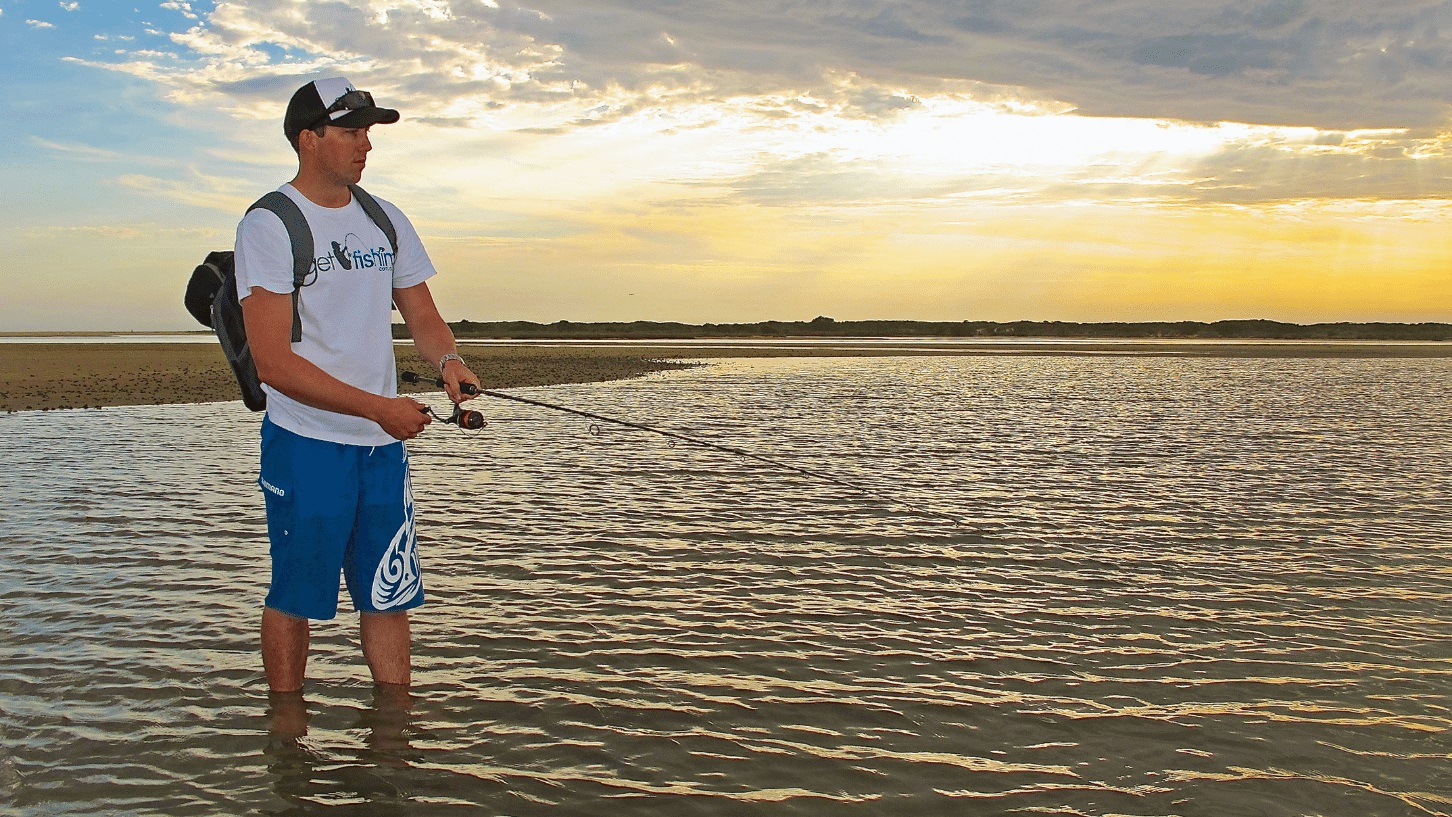
Starlo lifts the lid on one of his favourite summer pastimes and shares the wondrous joys of land-based fishing for whiting using surface lures.
A little over a decade ago, if you'd told most Aussie anglers that it was possible to consistently and successfully target yellowfin, sand, summer or silver whiting on surface lures, they'd have raised an eyebrow, snickered, or even openly scoffed at this seemingly outrageous suggestion. However, even back in those days a few of us had begun to notice that these supposed bottom grubbers would occasionally streak up to the surface and smack a small popper or stickbait intended for bream.
Most of us wrote this off as abnormal behaviour - perhaps a rush of piscine blood, or a moment of out-of-character confusion on the part of these typically shy and retiring fish. Certainly not something we could build an entire fishery on… But how very wrong we were!
A few even remain skeptical about the whole deal, and wonder if it's all a massive con job. My aim is to offer all those folks - the starters and the skeptics - a leg-up on the ladder to surface whiting enlightenment, with particular emphasis on chasing these great fish without a boat: while walking the shore or wading the flats.
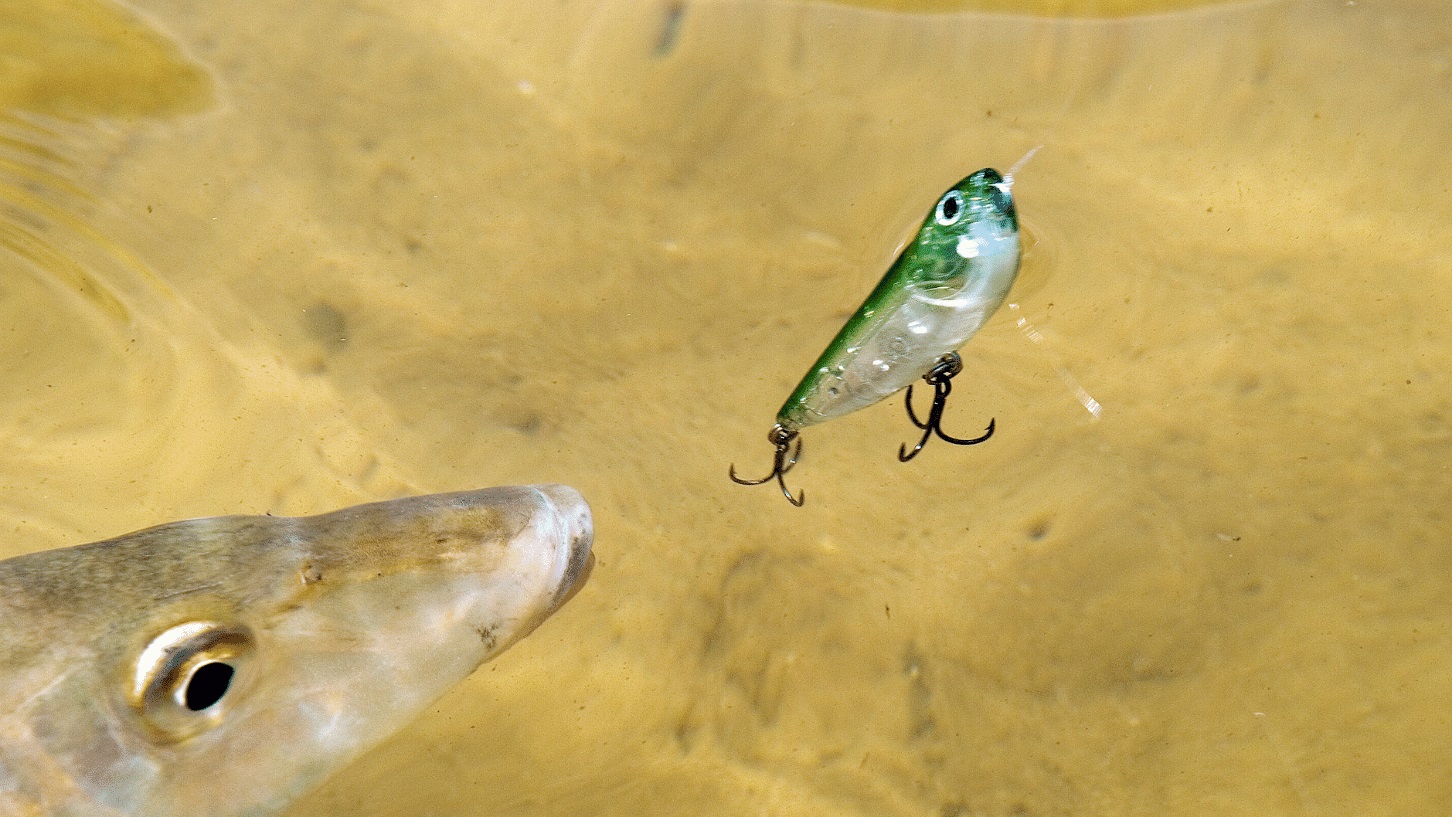
What to pack when wading for whiting
With all the emphasis on boat and kayak fishing in the angling media these days, it's easy to forget just how much great action is still available to the land based or wading angler. This is particularly true around the southern half of our continent, where crocodiles aren't an issue! There are vast stretches of shore and shallow flats readily accessible to the walking or wading angler.
Lightweight lure casting is especially well suited to this caper. With a single-handed flick stick, a light backpack or shoulder bag and a small selection of lures, it's possible to spend many long, happy hours walking and wading the flats in pursuit of a dozen or more popular targets. Few species better encapsulate this footloose ethos than the various members of the sand whiting clan.
The real trick is to stay mobile and not burden yourself with too much paraphernalia. Covering ground (and water) is very often the key to success, and this is done far more easily if you're not loaded down with gear. However, there are a few essentials that you'll need to consider carrying.
If you plan on keeping the odd fish for the table (as I invariably do), think about how you're going to bring them home. A plastic garbage bag folded up in your backpack is one workable option, but I actually favour a wading bag, of the sort commonly used by surf and rock fishers.
It should go without saying that a long-peaked or wide-brimmed hat and a pair of quality polarised sunglasses are essential for safe and effective flats' fishing. Make it a habit to wear both items at all times. You'll also need a pair of braid scissors or line cutters, some long-nosed pliers for hook removal, a spool or two of leader material and a box or flat tray of lures… And that just about covers it!
If you pack your mobile phone (even if only to take photos) and it's not a waterproof model, place it in a dry bag to keep it dry.
Choice of footwear is a very personal issue. I tend to wade barefoot 90% of the time, and I accept the risks involved. As well as the odd oyster, razor fish, bullrout, fortescue and broken bottle, our estuary flats are also home to stingrays that range in size from bread plates to monsters the width of a billiard table. All are equipped with serrated, venomous barbs on their tails and are capable of inflicting very nasty wounds.
Where and when to start wading for whiting
Surface luring can and does work anywhere that yellowfin, sand, silver or summer whiting occur in decent numbers within our estuaries, bays and harbours, and I've even heard of the technique producing results from ocean surf beaches on calmer days! However, catches improve dramatically in clear, tidal estuarine water shallower than two metres, and some of the best action I've ever experienced has taken place in very skinny water indeed: from ankle to crutch deep. This is rather handy for the walking angler!
In my experience, surface luring for whiting is mostly a warm water technique, with results improving dramatically as the water heats beyond 20 to 22 degrees Celsius. That can mean good fishing as early as September and as late as May in parts of Queensland, while throughout most of NSW, Victoria, South Australia and the southern corner of Western Australia, best results are typically confined to the November to March period.
I firmly believe that whiting attack surface lures primarily because they regularly target prawns, which often race to the surface and jump or skip away when chased. It's therefore not too surprising that surface fishing results for these fish are often best where and when prawns are most active.
In particular, this means the period from about four days after the full moon right through the 'dark' phase of the lunar cycle, until a few days after the new moon. However, I've caught whiting this way on every state of the moon. Tides can play a role, too, but optimum tides vary from place to place and, once again, I've caught fish at all states of the tide. Remember: rules were made to be broken!
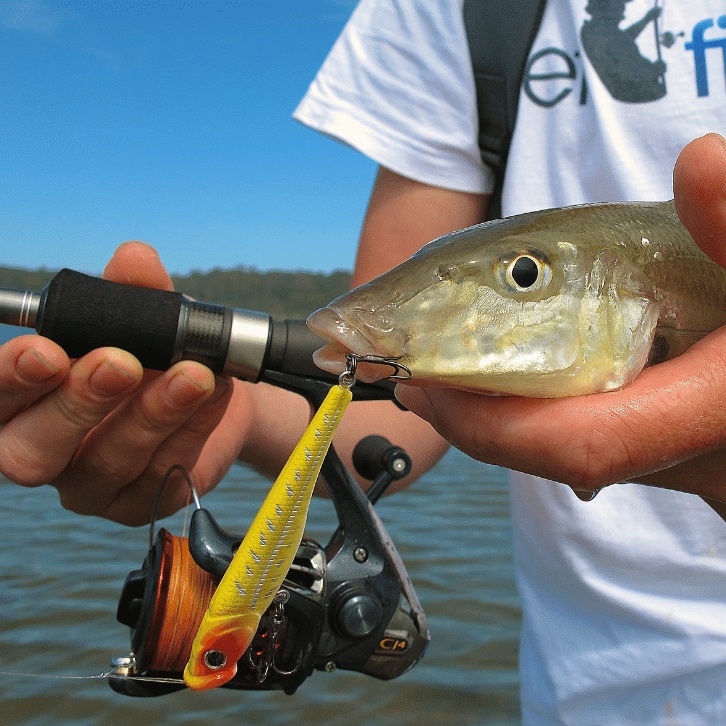
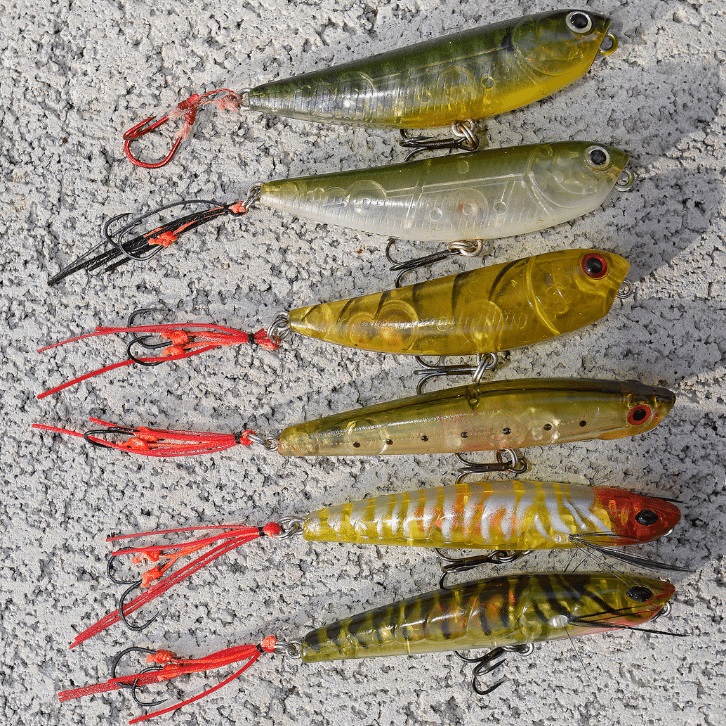
Tackle selection for whiting
Light spinning tackle and fine main lines are required for casting these lures the lengthy distances necessary for consistent success, and longer than standard rods are ideal, especially when fishing on foot. I like a light, tippy rod of at least two metres in length, with around 2.2-2.4m being absolutely optimum, in my opinion.
It's certainly possible to use nylon or fluorocarbon main lines, but I much prefer very skinny braid with a rated breaking strain of one to 6lb, as it definitely casts further. If you choose braid, you'll need to add a leader, but long, ultra-fine leaders are not really essential in this game.
Opt for a short length of 8-16lb nylon or fluorocarbon. A short, heavier leader like this won't usually put the whiting off biting (because the leader is up on the surface) and it also represents great insurance if a big flathead gets in on the act. If you keep it short enough (say 50-60cm), you can also cast with the connecting knot outside the tip, reducing hang ups and increasing casting distances.
There is a plethora of smallish (50-80mm) cup-faced poppers and surface stickbaits on the market that all catch whiting. In clearer water (which tends to produce the best whiting action, in my experience), choose subtle, neutral, semi-transparent and generally 'prawn-like' colours with green or brown base tones. Oh, and make sure your hooks are small, fine and extra sharp!
How to fish surface lures for whiting
As explained in the accompanying video, you need to cast your smallish (50 to 80 mm) cup-faced popper or surface stick bait as far as you possibly can over likely stretches of shallow water, ideally with the help of a breeze at your back. Don't be afraid of those summer winds. They can actually be your best friend in this game!
For whiting, always work the surface lure with a reasonably quick and continuous action. Pauses or stops are rarely productive on these fish.
With poppers, look to maintain a constant spurt of water ahead of the lure and a 'bloop-bloop-bloop' or 'pop-pop-pop' action. When using stickbaits, attempt to produce a continuous 'walk the dog' zigzagging or bobbing motion. If a whiting follows either lure style, keep the retrieve going! Only try a quick pause if you're running out of retrieve space. Pauses work extremely well on bream, but usually result in following whiting losing interest and turning away… However, there can be exceptions to this pattern. Remember what I said about rules being made to be broken!
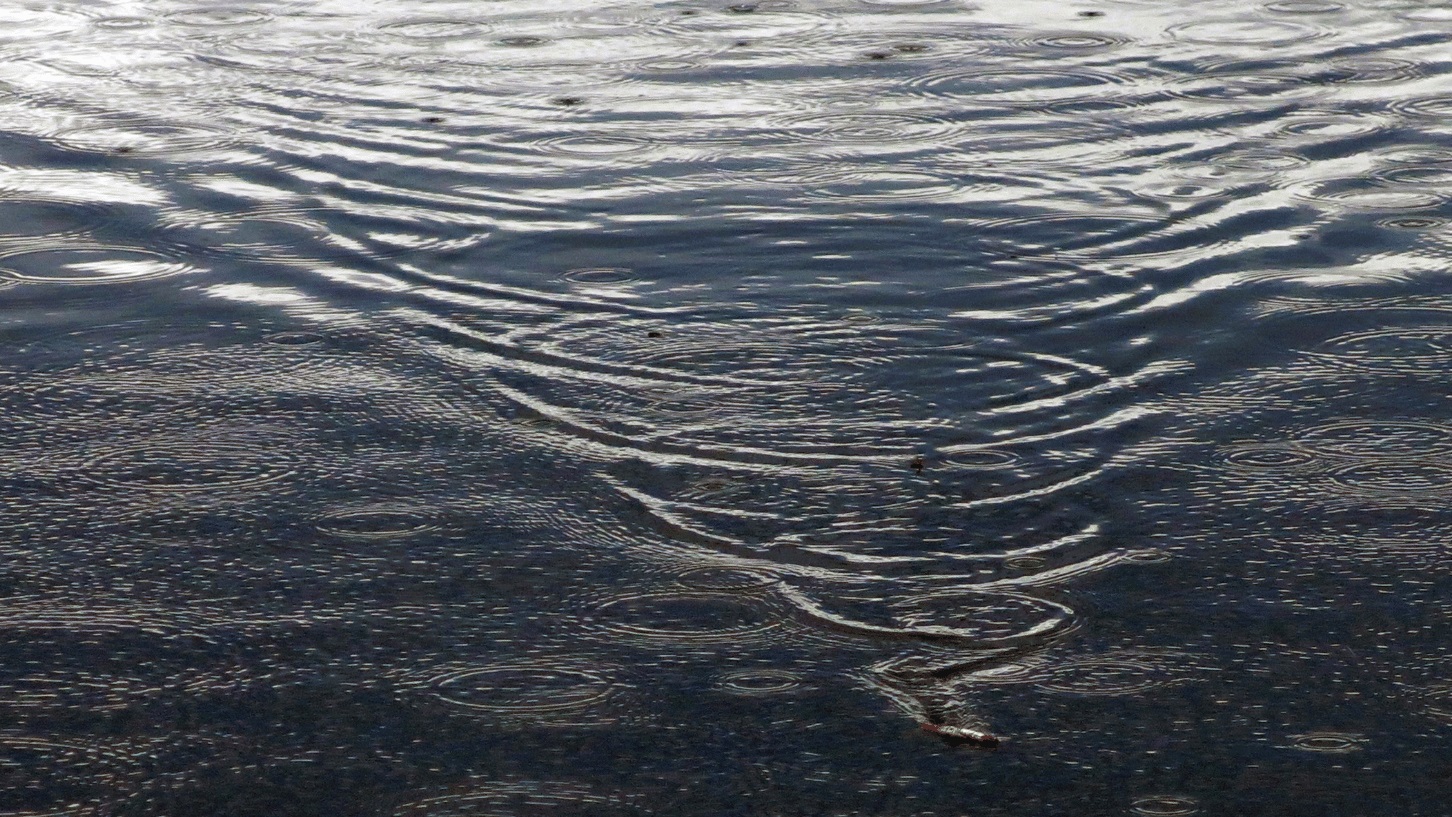
Walk the dog
To be honest, these days I hardly ever use cup-faced poppers for whiting unless the water is badly chopped up by wind. I much prefer to throw floating stickbaits most of the time. In the places where I fish, bigger whiting (which are quite old fish) have now seen a lot of poppers, and I find they can be rather suspicious of them.
Stickbaits are more subtle and sneaky and seem able to go on catching these 'educated' whiting, season after season.
The trick with surface stickbaits lies in achieving that deadly walk-the-dog action described earlier, with the lure bobbing, weaving and zigzagging seductively from side to side. Each brand and model of stickbait requires a slightly different retrieve to achieve its optimum action, but the basic method is to constantly crank the reel handle at a slow to medium pace while 'bouncing' or flicking the rod tip with a regular, mechanical cadence, rather like one of those metronomes musicians use to maintain the beat.
You can either angle the rod down towards the water (often best when standing on the casting deck of a boat) or slightly upwards (when wading or sitting in a kayak). You'll need to experiment and practice a little to get it right, but when you do, you'll know!
My theory is that cup-faced poppers provide a sonic imitation of another whiting or bream slurping and sucking noisily at a fleeing prawn, while stick baits mimic the prawn itself.
Poppers rely on an 'uneducated', competitive or fired-up fish tracking the sound to its source and then not stopping to question why the phantom predator and its prey have suddenly merged into one small dollop of plastic. However, as already mentioned, I'm increasingly finding that this particular deception is no longer quite so effective as it once was. By representing the prey item itself, 50-85mm stickbaits have given my topwater whiting (and bream) fishing a whole new lease on life.
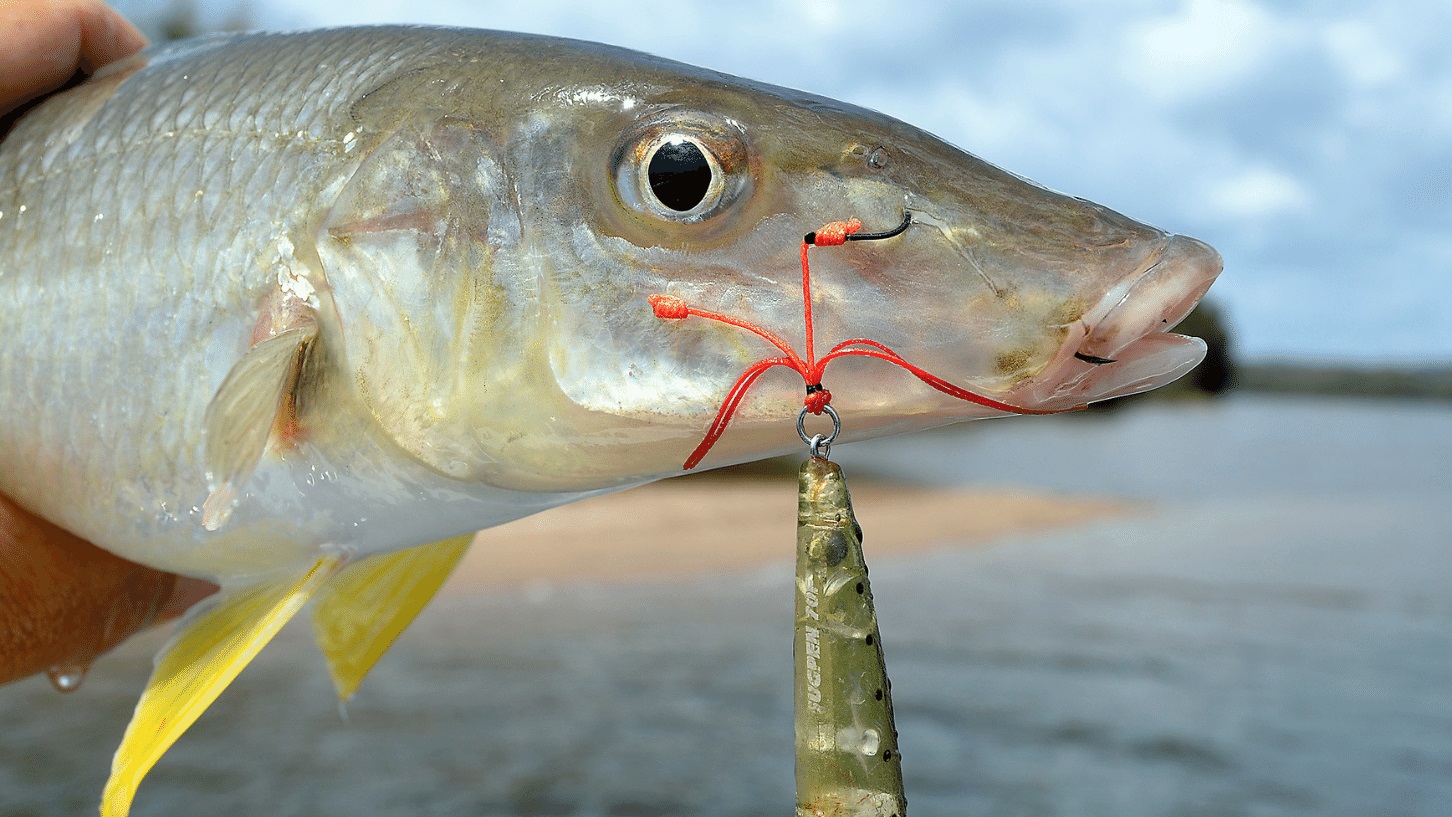
Hook tricks
The other big breakthrough for me over recent seasons has been the adoption of small, wickedly sharp assist hooks, rigged to dangle from the tail of my stick baits (and poppers). These little singles on their short droppers have significantly increased my hook-up rate, especially on more hesitant or uncommitted whiting (and bream) that might only make one quick nip at the back of the lure before fading from sight.
Like all forms of modern sport fishing, I'm sure that targeting topwater whiting will continue to evolve and develop over coming seasons. But the one thing that won't change is the incredible thrill of seeing a lit-up, elbow-slapper of a whiting streak up from the bottom to climb all over your dancing surface lure in a rolling boil or a flurry of flying spray, especially while you're wading knee deep in warm, crystal clear water under the summer sun on a sparkling estuary flat.
It's a truly magical experience, and if you haven't tried it yet, you really need to!
Find your local Anaconda store and check out our extensive range of fishing gear for your next topwater whiting session.